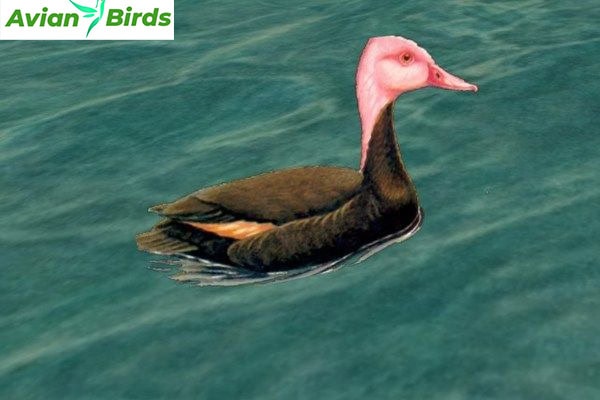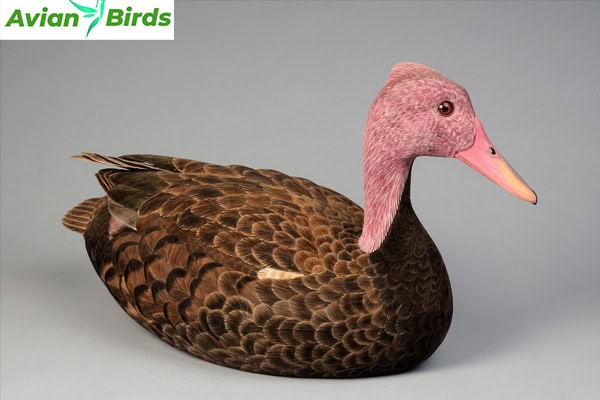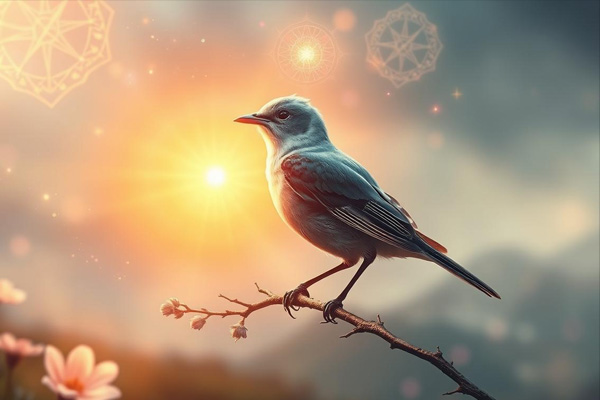Pink-Headed Duck: Rare Beauty of Indian Waters
Did you know the Pink-Headed Duck, known as Rhodonessa caryophyllacea, hasn’t been seen in the wild since 1949? This bird was once common in Indian wetlands. Now, it’s a symbol of how fragile our natural world is.
Recent news from Myanmar has conservationists excited. They think a small group might still be alive. This article will tell you about the Pink-Headed Duck’s unique traits, where it lives, and the efforts to save it from disappearing forever.
~Here we’ll learn about the Pink-Headed Duck (Rare Beauty)~
Fun Facts
- Scientific name – Vulpes vulpes
- Lifespan – 3 to 6 years in the wild
- Average size – 18 to 35 in (46 to 90 cm) from head to body
- Average weight – 6.6 to 24.2 lb (3 to 11 kg)
- Family – Anatidae
Introduction to the Pink-Headed Duck
The Pink-Headed Duck is a mystery in the bird world. It has a history that captures the interest of bird lovers and conservationists. This bird stands out with its unique look and hard-to-find nature.
Once common in India and nearby areas, the Pink-Headed Duck is now mostly gone. Records show it was seen many years ago, with the last sighting in 1949. This shows how rare it is and why we need to protect it.
Finding the Pink-Headed Duck is a puzzle. Despite many searches, no one has seen it alive. But, stories from Myanmar suggest it might still exist. These stories make us want to find and study the few birds left, offering hope.

Description and Identification
The Pink-Headed Duck is easy to spot thanks to its unique look. It’s a medium-sized bird, about 16.5 inches long, and weighs between 27.95 to 47.93 ounces. It has a plump body, a slim neck, a flat forehead, and a long bill. These features make it stand out among other waterfowl.
Physical Characteristics
The Pink-Headed Duck has a rose-pink head and neck that catch your eye. Its body is rich brown, and its white-edged wings add to its beauty. Female ducks are less colorful, and young ones have almost white heads without the pink color.
Coloration and Plumage
The Pink-Headed Duck’s bright colors come from carotenoid pigments. Males show off pink and brown, while females are more subdued. This difference makes it easy to tell males from females and young from adults.
| Characteristic | Description |
|---|---|
| Length | 16.5 inches |
| Weight | 27.95 to 47.93 ounces |
| Head Color | Rose-pink |
| Body Color | Rich brown |
| Wing Edges | White-edged |
| Female Coloration | Duller tones |
| Young Birds | Almost entirely white-headed |
Call and Communication
Pink-headed Duck’s calls are unique and enchanting. Males make a mellow, metallic-sounding call. This call is key during mating rituals. They also make a wheezy whistling sound to attract mates.
Females have a low-pitched quack. This shows their complex communication methods for social and mating needs. Spotting these ducks is hard because they are shy.
Knowing their calls helps researchers and birdwatchers find Pink-Headed Ducks. In short, their calls are crucial for their daily life and finding mates.

Habitat and Distribution
The Pink-Headed Duck lives in specific places that are key to its survival. Knowing where it lived before and now helps us understand its challenges and chances.
Historical Range
Before, the Pink-Headed Duck was found in swamps and wetlands in Myanmar, India, and Bangladesh. It was also seen in Nepal and parts of Pakistan. Most of the time, it was seen in the Bihar region of India, near the Ganges and Brahmaputra rivers.
This shows it lived in a variety of wetlands that were perfect for it.
Current Habitat
Now, the Pink-Headed Duck mostly lives in the northern swamps of Myanmar. Kachin state is where most of them live. They live in freshwater areas with lots of plants, like marshes and tall grasslands.
These places are vital for their breeding and finding food. This shows how their living places have changed over time.
Feeding and Diet of the Pink-Headed Duck
The Pink-Headed Duck has interesting eating habits. It eats a variety of foods, showing it’s an omnivore. Researchers have studied its diet and found it to be quite diverse.
Diet Composition
Studies on dead ducks show what they like to eat. Their diet includes:
- Aquatic plants, including various species of weeds
- Mollusks provide essential nutrients
- Other invertebrates complement its dietary diversity
Feeding Behavior
This duck eats by skimming the water’s surface and sometimes tilting its body. This lets it get food from both the surface and below. This is different from many other diving ducks, making it efficient at finding food in various places.
Threats to the Pink-Headed Duck
This duck with a pink head is in grave danger due to many threats. These include losing their homes and being hunted in the past. These issues have greatly harmed this beautiful bird.
Habitat Loss and Degradation
One big threat is losing its home because of farming and building. Wetlands are being drained for these reasons, leaving the ducks without a place to live. Also, invasive plants like water hyacinths are making the remaining habitats worse. This makes it hard for the ducks to find food and a safe place.
Historical Hunting and Market Influence
Hunting has also greatly harmed the Pink-Headed Duck. Back when the colonies were here, people hunted them for fun and to sell. This, along with losing their homes, has greatly reduced their numbers. It shows how much humans have affected this rare bird.

Conservation Efforts and Status
The Pink-Headed Duck is in a critical situation and needs urgent help. It’s listed as critically endangered by the International Union for Conservation of Nature (IUCN). Since 1956, laws have tried to protect it and its home.
Current Conservation Status
The IUCN status shows we must act fast to save the Pink-Headed Duck. Even with laws, its home is being destroyed, putting its survival at risk. There’s hope it might still be found in hidden places. This makes saving it more important than ever.
Ongoing Efforts and Future Directions
Groups like BirdLife International are working hard to find where the Pink-Headed Duck might be. They’re doing:
- Systematic surveys in known and possible areas.
- Looking for it in places it might be active at night.
- Protecting it if they find any groups.
Plans include a big strategy that protects its home and teaches people about it. This way, local communities can help save this rare bird for the future.
Wrapping Up…
The Pink-Headed Duck reminds us of the fine balance in our ecosystems. It shows us why conservation is so important. This bird’s beauty touches not just bird lovers but also highlights the need to protect our environment in India.
Protecting the endangered Pink-Headed Duck is a big deal. It means we care about keeping our planet’s diversity alive. Thanks to conservation efforts, people, researchers, and groups are working together. They want to make sure this bird is still around for the future.
When we work to save wildlife, we remember that every bird, like the Pink-Headed Duck, is crucial. By spreading the word and supporting conservation, we help this rare bird. We make sure it can keep living in India’s waters for a long time.






